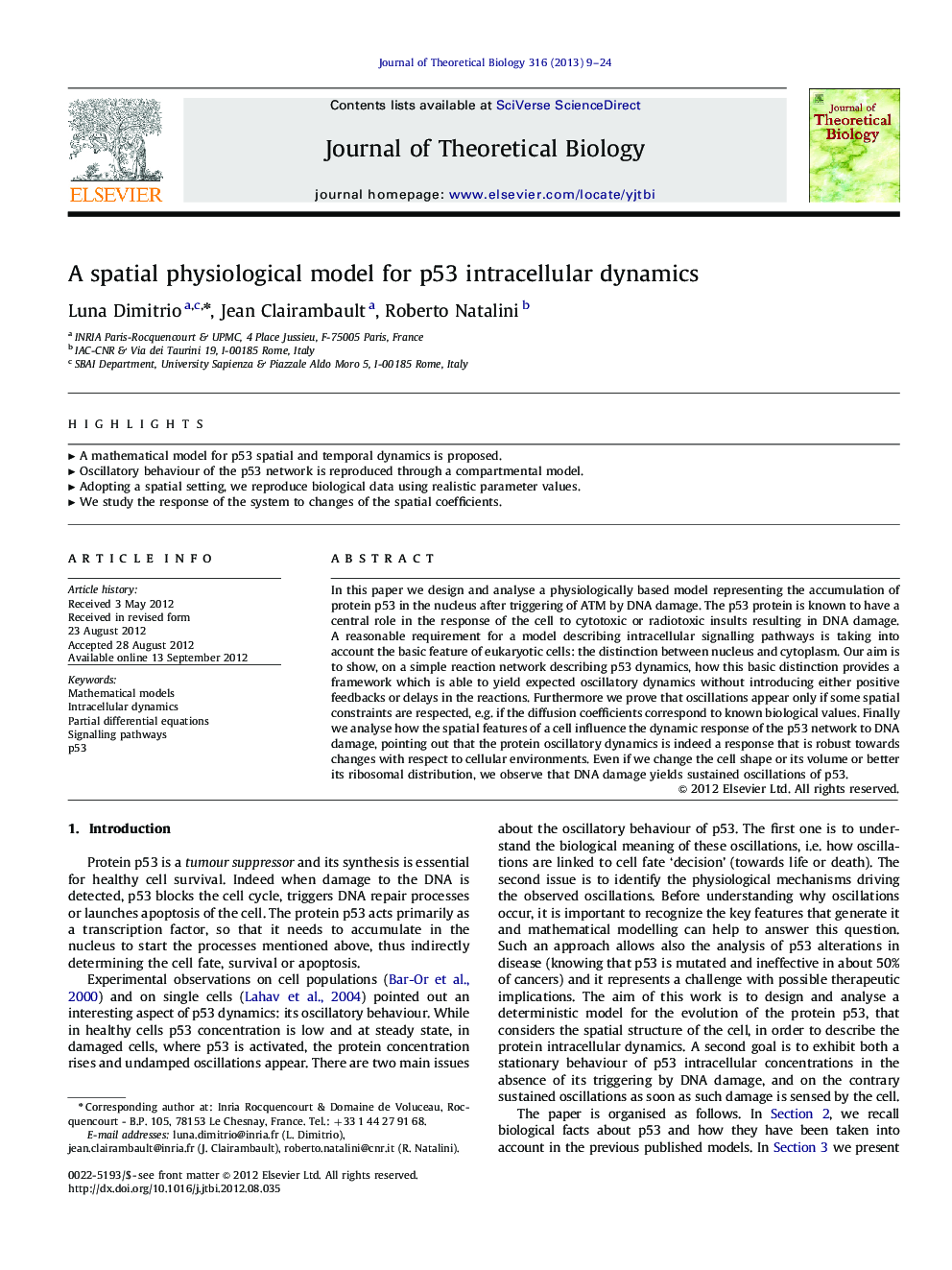| کد مقاله | کد نشریه | سال انتشار | مقاله انگلیسی | نسخه تمام متن |
|---|---|---|---|---|
| 4496567 | 1623894 | 2013 | 16 صفحه PDF | دانلود رایگان |

In this paper we design and analyse a physiologically based model representing the accumulation of protein p53 in the nucleus after triggering of ATM by DNA damage. The p53 protein is known to have a central role in the response of the cell to cytotoxic or radiotoxic insults resulting in DNA damage. A reasonable requirement for a model describing intracellular signalling pathways is taking into account the basic feature of eukaryotic cells: the distinction between nucleus and cytoplasm. Our aim is to show, on a simple reaction network describing p53 dynamics, how this basic distinction provides a framework which is able to yield expected oscillatory dynamics without introducing either positive feedbacks or delays in the reactions. Furthermore we prove that oscillations appear only if some spatial constraints are respected, e.g. if the diffusion coefficients correspond to known biological values. Finally we analyse how the spatial features of a cell influence the dynamic response of the p53 network to DNA damage, pointing out that the protein oscillatory dynamics is indeed a response that is robust towards changes with respect to cellular environments. Even if we change the cell shape or its volume or better its ribosomal distribution, we observe that DNA damage yields sustained oscillations of p53.
► A mathematical model for p53 spatial and temporal dynamics is proposed.
► Oscillatory behaviour of the p53 network is reproduced through a compartmental model.
► Adopting a spatial setting, we reproduce biological data using realistic parameter values.
► We study the response of the system to changes of the spatial coefficients.
Journal: Journal of Theoretical Biology - Volume 316, 7 January 2013, Pages 9–24